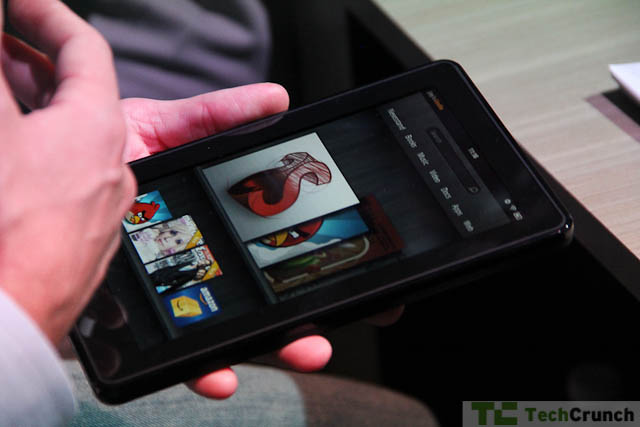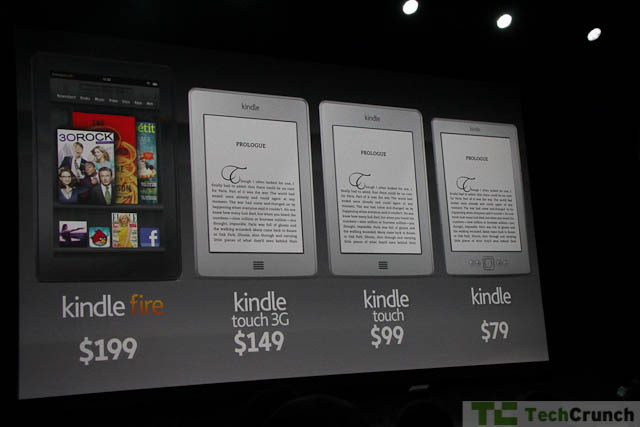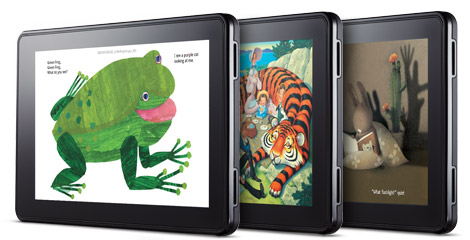The Android tablet electoral races are done. There’s a new mayor in Droidville. But this guy didn’t roll into town with pomp and circumstance. He strolled down Main Street and simply offered more than any other candidate, extolling a plan based on down-to-earth sensibility and affordability. Meet the Kindle Fire.
Amazon just unveiled the Kindle Fire, which will, without question, dominate the sub-iPad tablet market for years. Amazon did it right by copying Apple’s formula: tablets do not sell on specs; Amazon barely touched on the Fire’s hardware during its announcement. Instead, Jeff Bezos, doing his best Steve Jobs impersonation, stood tall on the stage and ran through a long list of features that makes the Fire an iPad alternative the world wanted.

The Fire runs Android but that’s invisible to the user. Amazon instead built a custom UI on top of an unspecified Android build. This is the right move for most consumers. Android 2.x is not meant for tablets. Sure, some die-hards love it on a slate, but most of those same users will profess that it’s not right for the general consumer. Honeycomb isn’t much better and requires more beefy hardware — a dealbreaker for a company like Amazon looking to undercut the iPad’s price. Then you have Amazon’s massive server capability.
Amazon is leveraging its many server farms to pre-render, and therefore, smooth out the overall web browsing experience. Called Amazon Silk, the browser learns users behaviors and starts caching often visited pages for quicker load times. The system intelligently offloads content to Amazon’s Elastic Compute Cloud (Amazon EC2) that shrinks it to a more manageable size: Flash, images, and all the heavy content. All this is done before the data hits the tablet which makes for, well, a silky experience. Visit TechCrunch a lot? Great, thanks, but the page will load even faster thanks to caching smart of Amazon Silk.
Sure, the Fire is a front-end for a bunch of Amazon services, but this back-end processing will allow the $199 tablet to feel like nothing else in its price point. It might even load pages quicker than the A5-powered iPad 2.

The Amazon Fire is, in a sense, an iPod Touch. It is hitting the market right when such a stop-gap product is needed. The iPad is clearly a “better” device with better hardware and more functions, but the Fire is $300 less and still rather capable. Likewise, the Fire might not be the best Android tablet, but Amazon has clearly compensated for the lackluster hardware with a fresh interface. Consumers have shown a resistence to non-iPad tablets, but the $500 price point is out of reach for many consumers. A $200 tablet, loaded with Amazon’s media offerings, is the right product to kick start tablets from niche to mainstream.
Amazon followed Apple’s lead in launching media services prior to its hardware. Over the last year, the company has invested heavily into streaming video, MP3 downloads and cloud computing. It all makes sense now. By showing consumers that, say, the Amazon Prime Instant Video works well on user’s computers, they’re now more comfortable buying a tablet built around the service. This media content instantly pushes the Fire to the front of the Android line. For the average consumer, the Fire is the perfect low-cost iPad alternative.
